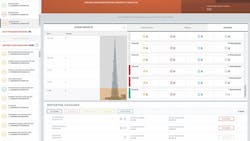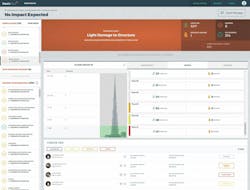Earthquake response system takes the guesswork out of seismic safety
The recent 7.1 magnitude earthquake in Southern California was a good reminder that, unlike many other natural disasters, earthquakes can strike at any time, without warning. And the panic and anxiety that comes with an earthquake doesn’t stop when the shaking does.
Questions concerning the safety of occupants, the functionality of the building’s critical services, and the integrity of the structure can be difficult to answer in the immediate aftermath.
The creators of OasisPlus hope their new earthquake response system can help. The platform, developed by Kinemetrics, provides the tools and information necessary for an effective earthquake response. The system includes advanced sensing technology, a command console, and a mobile app.
OasisPlus’s sensors measure the building’s movement as it shakes during an earthquake and then evaluates the results based upon a detailed understanding of the building’s performance against the type of motion measured. This data is then translated into a set of alert levels that indicate the expected impact the earthquake will have on different building areas. Alert levels are guided by international standards, including ASCE 41, to help turn the data into actionable information such as the probability of certain levels of damage at specific locations.
See Also: Smart sensor maintains privacy, enhances safety in sensitive spaces
The building leadership team can then use the Command Console to access the alert level information for each section of the building. Alert levels can range from occupant discomfort to potential structural or non-structural damage.
Meanwhile, the mobile app allows users to check-in and indicate their location and if they are injured. Injury and hazard reports made via the app show up immediately in the Command Console. If evacuation is necessary, the Command Console can be used to send an alert to the app that includes exit routes.
A report is automatically sent to the leadership team, response team, and the building’s structural engineering firm. It includes building alert level information and building response data, like inter-story drift, that engineers can use in assessing the structure.
“Not all earthquakes require extreme response or full evacuation, and many times the ability to keep patients under care in place—especially those in ICU settings—can lead to better overall outcomes,” said Ogie Kuraica, President and CEO of Kinemetrics. “OasisPlus can enable smart, real-time decisions that take emergency preparedness and disaster recovery to the next level.”


